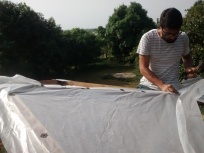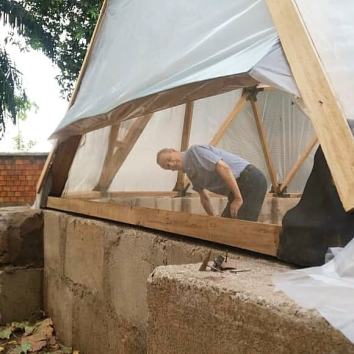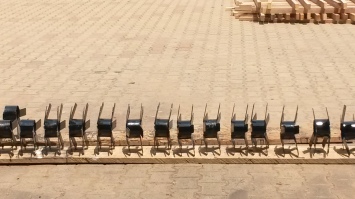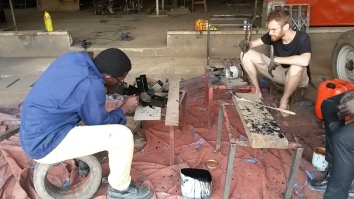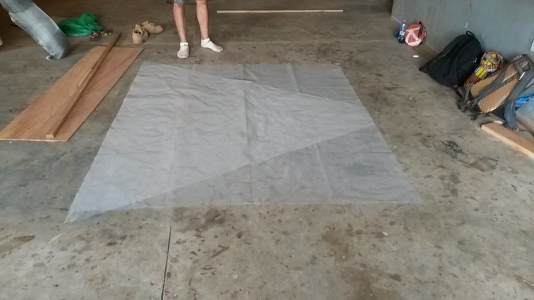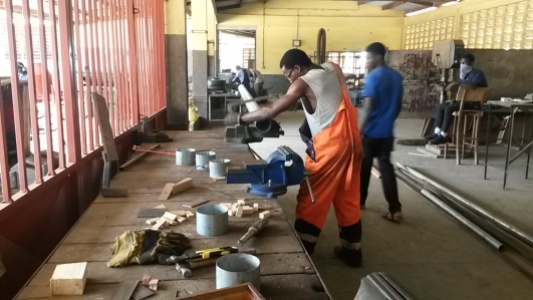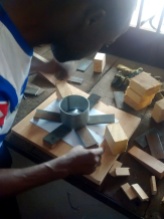Today thanks to Vincent, Charles, Sam, Chris Brown and Eric the greenhouse finally got its cover!
Starting early in the morning we first cutted many pieces of plastic sheet. The first idea was to cover the dome with vertical stripes of plastic, filling the gap between levels of hubs. Since the scaffolding was to small for this kind of fixing, we then decided to cut many triangles. The cutting became faster and even the fixing, while we needed to be careful when joining the plastic together. To make the cover enough waterproof it was necessary to fold the plastic pieces before nail them.
This last day was quite stressful but in the end we completed almost all the covering. The openings are also fixed with metal hinges. The top ones will be fixed while the bottom ones can be open depending on climate and wind condition. In fact, in order to use geothermal cooling it will be necessary to close those down windows and maximize the air flow through the underground pipe.

The guys will continue with the finishings next week.
We truly thank VID and Gianpaolo Gullotta to have involved us in this project and all the local people who supported us in all the construction phases, first of all brother Ricky!
The overall cost of this 80m2 prototype is around 900€, including materials and labour. In the beginning we were suppose to achieve a low building budget around 3000€ for a 110m2 greenhouse. Moreover the used materials are all available in the local market of Sunyani as well as the construction system could be easily improved in the Salesian workshop starting from the workers who really helped us during these days.
For these reasons, we hope that this geodetic design could really become an affordable and effective system for local farmers to start a sustainable business in agriculture.
From now on VIS team starts monitoring the greenhouse to see how the adopted solutions are responding to the expected results.
Further news and projects might come soon!







